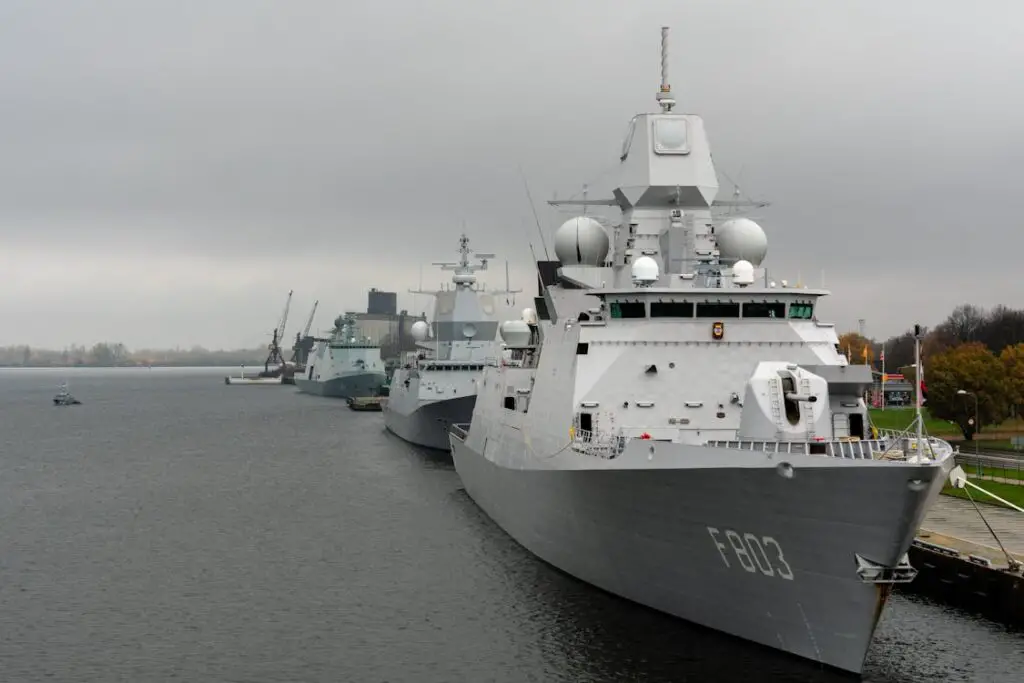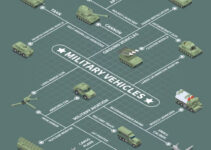
Naval engineering ensures the safety, functionality, and sustainability of military operations and global challenges. With evolving technology, safer and more efficient solutions are critical for modern naval operations.
These solutions improve ship design and materials while safeguarding personnel. In this article, we’ll discuss how new technologies and innovations protect navy personnel and the environment while enhancing operations.
Advancing Materials for Improved Ship Safety
The materials used in ship construction play a crucial role in improving vessel safety and durability. Composite materials are stronger, lighter, and more resistant to corrosion from seawater than traditional materials.
Fact.MR notes that the marine composites market was valued at $4.8 billion in 2023 and is growing at 6.0% annually. It is expected to reach $8.5 billion by 2033, driven by demand for lightweight, durable materials. These composites enhance fuel efficiency, corrosion resistance, and vessel performance, making them essential for modern marine engineering.
These materials also enhance ship performance while ensuring environmental sustainability through non-toxic, safer alternatives. Naval engineers continuously seek innovative materials that balance strength and safety in ship design.
Modern materials contribute significantly to vessel strength, providing crew safety during challenging conditions at sea.
Can composites improve ship performance beyond safety?
Yes, composites not only enhance safety but also improve overall ship performance. Their lightweight nature allows for faster speeds and better maneuverability, reducing fuel consumption and operational costs. Additionally, composites’ resilience under extreme conditions ensures ships can maintain high performance over extended periods without significant wear.
Safer Fire Suppression Solutions
The Navy is actively seeking safer and more environmentally friendly fire suppression solutions due to concerns over PFAS chemicals. Some of the alternatives being explored include:
- Fluorine-free foams: These provide effective fire suppression without the harmful environmental and health risks of PFAS chemicals.
- Enhanced firefighting techniques: The Navy is investigating innovative methods that reduce environmental impact while maintaining high firefighting standards.
- Safer, eco-friendly solutions: A focus on environmentally responsible agents aims to ensure both crew safety and sustainability.
ACS Publications states that in Europe and Australia, F3 has successfully replaced AFFF in aviation, petrochemical, and marine industries. Countries like Germany, Sweden, and the Netherlands have adopted F3 for various fire suppression uses. Although the US doesn’t mandate F3 use yet, the FAA Reauthorization Act outlines a national transition plan.
According to TruLaw, there has been an increasing number of lawsuits related to the use of AFFF in recent years. Navy personnel and other military staff have filed claims alleging health issues linked to exposure to PFAS chemicals in the foam. Lawsuits often cite long-term risks such as cancer, liver damage, and developmental issues, especially among those regularly exposed to firefighting foam.
The filing of the AFFF lawsuit by Navy personnel has led to a reevaluation of AFFF use within the military. Additionally, there is a growing urgency to adopt non-toxic fire suppression solutions that protect both personnel and the environment.
What challenges are faced in transitioning to fluorine-free foams?
Transitioning to fluorine-free foams presents challenges like the initial cost of replacement and training. There may also be concerns about adapting existing equipment to the new foam. However, the long-term environmental and health benefits justify these efforts and drive the push for widespread adoption.
Improving Electrical Safety Systems
Electrical systems on naval vessels are becoming more complex, increasing the potential for safety risks. Advanced circuit breakers and surge protectors are integrated into naval designs to prevent electrical fires or failures.
Engineers focus on fire-resistant wiring and fail-safe mechanisms to ensure systems remain operational during emergencies. Real-time monitoring through sensors allows immediate detection of electrical malfunctions, reducing the chance of catastrophic incidents.
MDPI mentions that sensors are like the “nervous endings” of modern industry, monitoring electrical equipment in real-time.
They capture abnormal signals and provide essential data for diagnosing faults quickly and accurately. We can enhance diagnostic precision and drive smarter electrical systems by integrating AI, big data, IoT, and cloud computing.
These innovations allow engineers to quickly identify and address electrical issues, improving crew safety.
Electrical safety systems are vital in preventing accidents and ensuring the reliability of the vessel’s power systems. Modern engineering advances reduce the risks associated with complex naval electrical systems.
Why are advanced circuit breakers crucial in naval operations?
Advanced circuit breakers are essential in preventing electrical fires by automatically shutting down circuits when faults occur. They minimize the danger of electrical fires and keep systems safe under strain. These devices are crucial to guaranteeing the dependability and safety of naval vessels’ electrical systems.
Enhanced Training for Crew Safety
Training plays a key role in ensuring that naval personnel are well-prepared to handle emergencies effectively. Simulation-based training helps crew members practice real-world scenarios in a controlled, risk-free environment.
As per DefenseScoop, new training technologies are enhancing collaboration and simulating real-life military operations for Navy surface mariners.
These advancements help build confidence in mariners across various career paths, preparing them for modern sea missions. Instructors now have data-driven tools to better train sailors, ensuring readiness for evolving naval challenges.
Training programs focus on the use of new safety equipment and ensuring proper emergency response techniques. Crew members also practice first-aid procedures and teamwork to enhance emergency preparedness. Continuous safety drills ensure personnel are always ready for potential threats during naval operations.
These training methods allow crews to respond to emergencies calmly, minimizing risks to the ship and crew. Modern training techniques ensure safety protocols are followed under high-stress, real-life conditions.
Why is teamwork emphasized in crew safety training?
Teamwork is emphasized because effective communication and collaboration are critical in emergencies. During a crisis, a coordinated response can save lives and prevent disaster. Training programs that emphasize teamwork ensure that personnel can rely on each other and work efficiently in high-stress environments.
Naval engineering is evolving to prioritize both safety and sustainability in modern operations. Advanced materials are being integrated to enhance vessel durability while reducing environmental impact. Safer fire suppression systems are replacing harmful substances to protect personnel and the environment. Electrical safety measures are improving to prevent potential hazards and failures. Advanced training programs using simulations emphasize teamwork and ensure personnel are prepared for emergencies. These innovations enhance the safety and efficiency of naval operations, contributing to a responsible and sustainable maritime future. The Navy’s commitment to these advancements ensures a safer, greener, and more efficient fleet.
